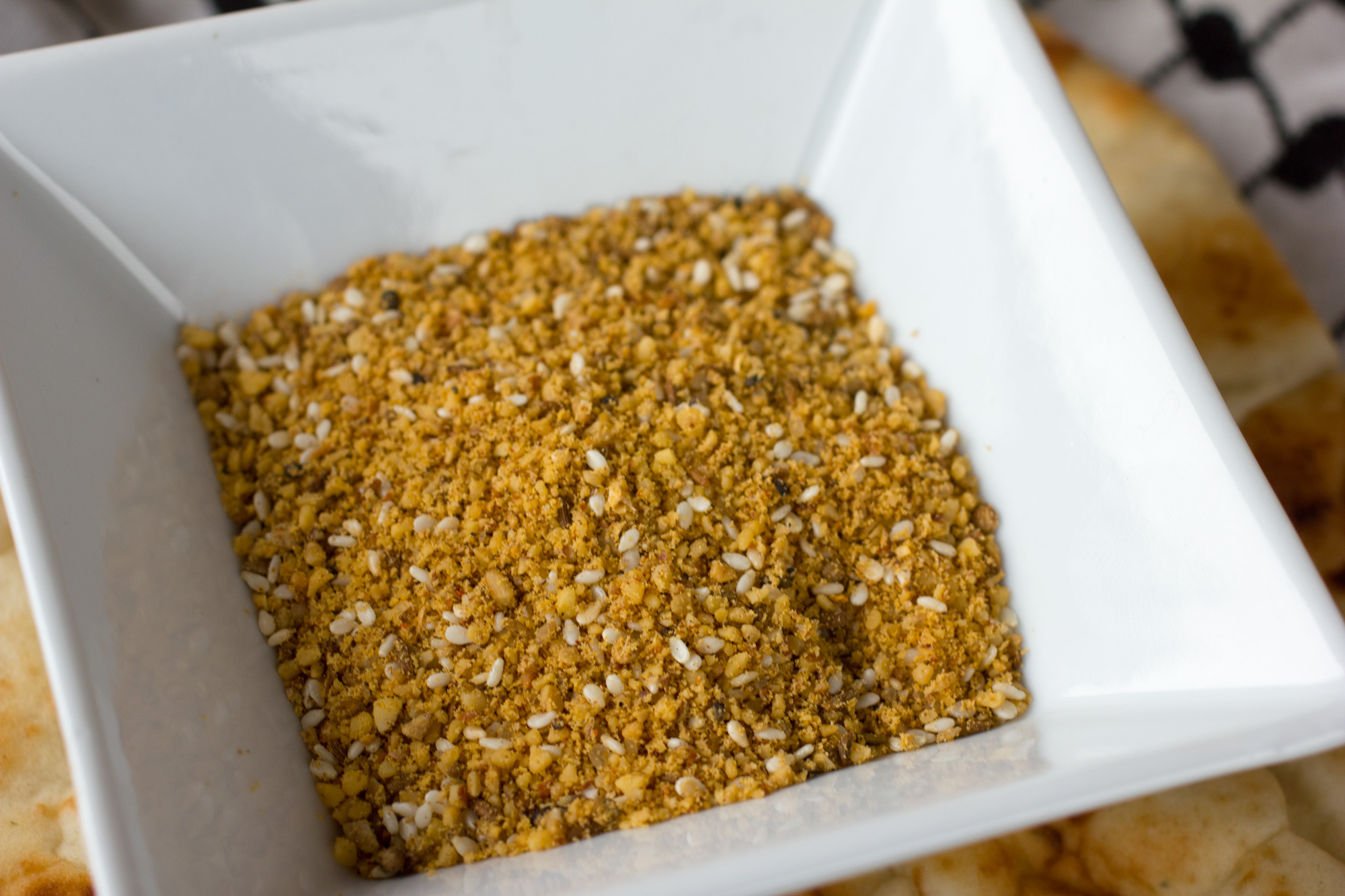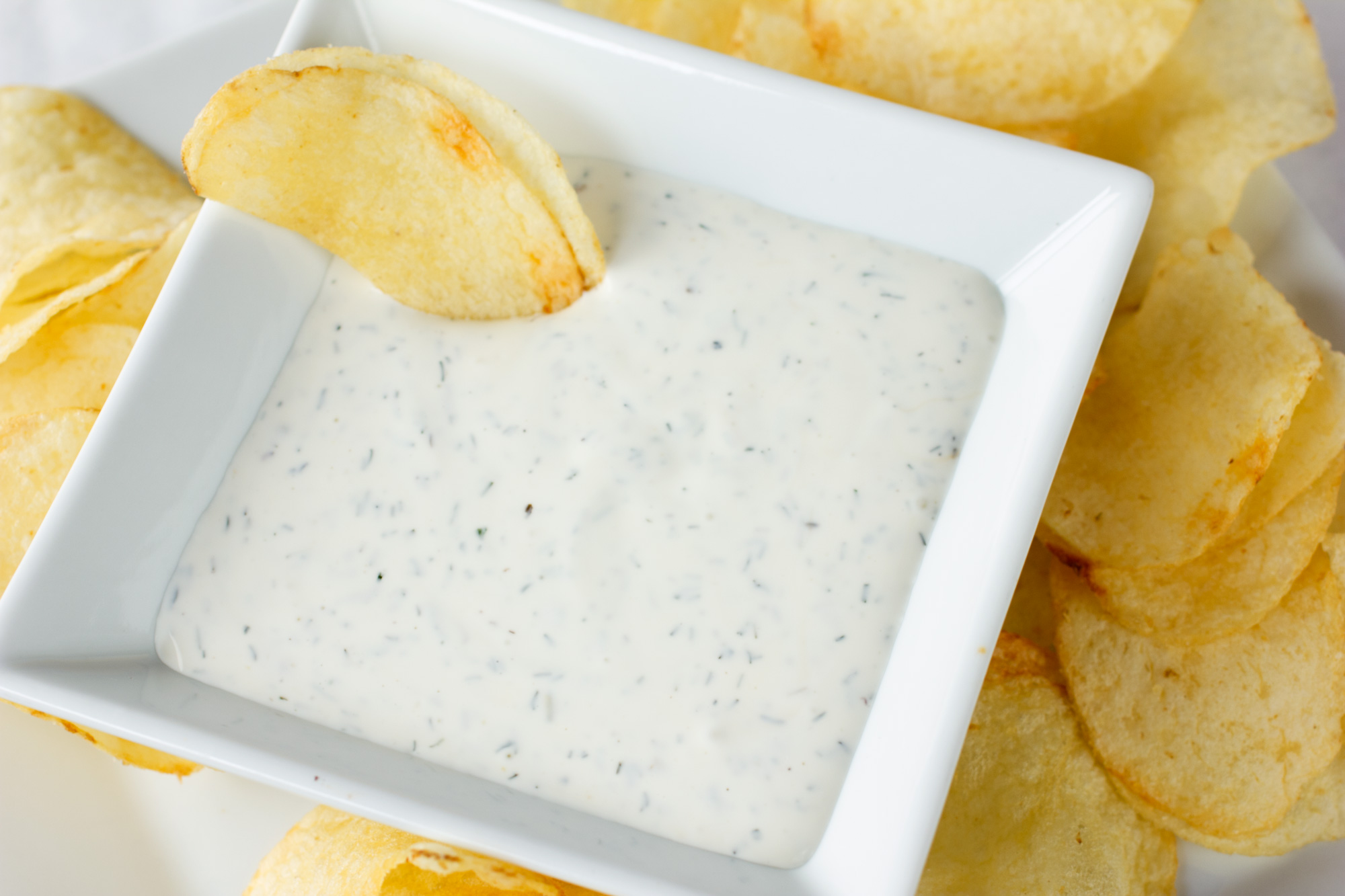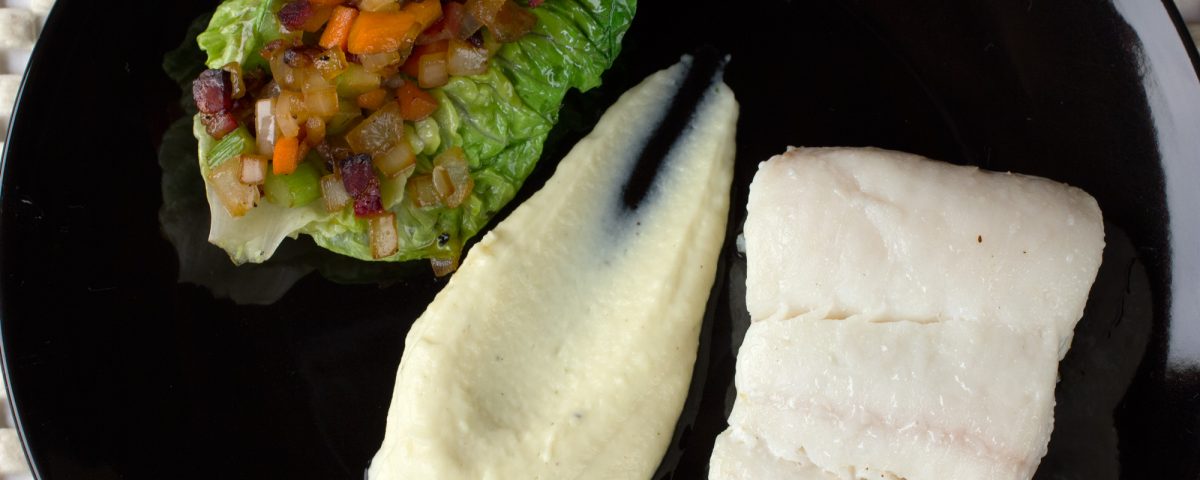
Roasted Dukkah
October 13, 2016
Ranch Valley Chip Dip
October 25, 2016by Michael White, Andrew Friedman
This recipe and following excerpt is from the book Classico e Moderno. If you would like to support this site purchase anything through the Amazon ad above.
When you get right down to it, this is a simple dish of seared halibut, an elemental stew of guanciale and vegetables, wilted romaine lettuce, and parsnip puree. But the presentation elevates it to another level, with the romaine acting as cups for the guanciale and the puree separating the components on the plate.
Position a rack in the center of the oven and preheat the oven to 350° F.
Line a plate with paper towels. Heat a large skillet over low heat and add 1 tablespoon of the olive oil, warming it. Add the guanciale and cook, stirring occasionally with a wooden spoon, until the guanciale has rendered its fat and is browned and crisp, 10 to 12 minutes. Transfer the guanciale to the paper-towel-lined plate.
Drain all but 2 tablespoons of the fat from the pan and add the carrots, onions, and celery. Cook, stirring frequently, until the vegetables are softened but not browned, about 6 minutes. Remove the pan from the heat and set aside.
Heat a large heavy ovenproof skillet over high heat. Add 2 tablespoons of the olive oil and tip and tilt the pan to coat it, heating the oil until it is shimmering and almost smoking. Season the halibut with salt and pepper, add the fillets to the pan, skinned side down, and cook until golden brown, 3 to 4 minutes. Transfer the skillet to the oven and bake until the halibut is just cooked through, about 4 more minutes.
While the halibut is in the oven, return the guanciale to the pan with the vegetables, set over medium-high heat, season with salt and pepper, and toss to rewarm the guanciale and integrate the flavors. Transfer the mixture to a heat-proof bowl.
Add the remaining 1 tablespoon olive oil to the pan, add the romaine cups, and cook briefly, turning with tongs, to wilt them and flavor them with the lingering fat in the pan, about a minute. Remove from heat.
Spoon a line of parsnip puree down the center pf each of 4 dinner plates. Set a halibut fillet on one side of the puree and a romaine cup on the other. Spoon the guanciale mixture into the romaine cups, drizzle the fish with the lemon juice, and serve.
Parsnip Puree
2 Tablespoons olive oil 1 garlic clove, smashed with the side of a chef's knife and peeled 5 parsnips (about 1½ pounds) peeled and cut into ¼-inch dice Kosher salt Freshly ground black pepper 2 cups whole milk 1 thyme sprig 1 bay leaf 2 Tablespoon unsalted butter ¼ cup extra virgin olive oil
Heat a medium heavy pot over medium heat. Add the olive oil and tip the pot to coat it, heating the oil until it is shimmering and almost smoking. Add the garlic and cook, stirring with a wooden spoon, until softened but not browned, about 2 minutes. Add the parsnips, season with slat and pepper, and cook, stirring , for 2 minutes, without letting it brown. Stir in the milk, thyme, bay leaf, and butter, bring the liquid to a simmer, and simmer until the parsnips are very tender, about 25 minutes. Transfer the mixture to a blender, in batches (use blender safely when blending hot ingredients. Towel over top instead of lid to keep it from spraying on you) and puree, adding the extra virgin olive oil in a thin stream, until smooth. Taste and adjust the seasoning with salt and pepper. Pass the puree through a fine-mesh strainer into a bowl, pressing down on the puree with a rubber spatula to yield as much puree as possible. The puree can be kept warm in a double-broiler over simmering water for up to 2 hours.

